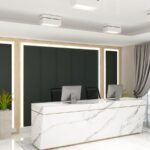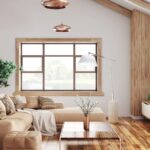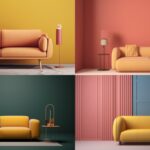Retail store layout plays a crucial role in attracting and retaining customers. A well-designed store layout can increase sales, enhance customer experience, and build brand loyalty. There are several types of retail store layouts that businesses can choose from depending on their objectives and products. In this blog, we will explore the different types of retail store layouts and their advantages and disadvantages.
Store Layout Types – Image: Pinterest
Grid layout:
- A grid layout is a traditional layout used by supermarkets and grocery stores. The layout comprises parallel aisles with products arranged in a linear fashion. This layout is easy to navigate and allows customers to find products easily. The grid layout is suitable for stores with a large number of products that need to be displayed.
Advantages:
- Allows for maximum use of floor space
- Easy to navigate and find products
- Suitable for large stores with a wide range of products
Disadvantages:
- Can be boring and uninteresting for customers
- Does not encourage impulse buying
Racetrack layout:
- Also known as the loop layout, this layout features a circular path that customers can follow around the store. Products are arranged in displays along the path, with aisles leading off it. This layout is commonly used by department stores and fashion retailers.
Advantages:
- Encourages customers to browse and explore the store
- Promotes impulse buying
- Suitable for stores with a large number of products
Disadvantages:
- Can be difficult to navigate for customers
- May create congestion in certain areas of the store
Free-flow layout:
- This layout allows for greater creativity and flexibility. Products are arranged in groupings or displays throughout the store, without any set path for customers to follow. This layout is commonly used by boutique stores and specialty retailers.
Advantages:
- Encourages customers to explore the store
- Provides a unique and interesting shopping experience
- Can be adapted to suit different store sizes and product ranges
Disadvantages:
- May be difficult for customers to find specific products
- Can lead to congestion in certain areas of the store
Boutique layout:
- This layout is similar to the free-flow layout, but with an added focus on creating a luxurious and upscale shopping experience. The store is designed to resemble a boutique, with products displayed in elegant settings and luxurious materials used in the store design. This layout is commonly used by high-end fashion retailers and luxury brands.
Advantages:
- Provides a luxurious and upscale shopping experience
- Allows for greater focus on individual products and brands
- Enhances the brand image of the store
Disadvantages:
- May not be suitable for stores with a limited product range
- Can be expensive to implement and maintain
Spine layout:
- This layout features a central pathway or spine running through the store, with products arranged in displays along the path. Aisles branch off the spine, leading to different sections of the store. This layout is commonly used by furniture stores and home goods retailers.
Advantages:
- Provides a clear path for customers to follow
- Allows for easy navigation of the store
- Suitable for stores with a wide range of products
Disadvantages:
- Can be boring and uninteresting for customers
- May not encourage exploration of the store
Herringbone layout:
- This layout features diagonal aisles with products arranged in a diagonal or herringbone pattern. This layout is commonly used by fashion retailers and boutique stores.
Advantages:
- Provides a unique and interesting shopping experience
- Encourages exploration of the store
- Allows for creative displays of products
Disadvantages:
- Can be difficult for customers to navigate
- May not be suitable for stores with a large number of products
Hybrid layout:
- As the name suggests, this layout combines elements of different layouts to create a unique and effective






